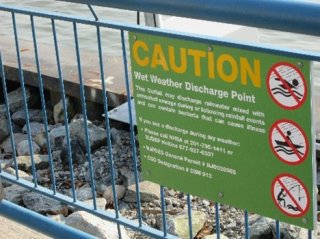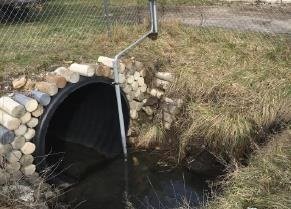Combined Sewer Overflow Solutions - Management Approaches
Communities implement a variety of approaches and technologies to mitigate the impacts of combined sewer overflows (CSOs). The goals for these approaches are to reduce the amount of combined sewage and stormwater discharged into waterbodies and ensure timely notification of CSO discharges to the public.
- Green/Gray Infrastructure
- Integrated Planning
- Smart Data Infrastructure
- Real-Time Notification
- Smart Sewers
Green/Gray Infrastructure

Green infrastructure, as defined in the Clean Water Act, is "the range of measures that use plant or soil systems, permeable pavement or other permeable surfaces or substrates, stormwater harvest and reuse, or landscaping to store, infiltrate, or evapotranspirate stormwater and reduce flows to sewer systems or to surface waters." Green infrastructure can be a cost-effective approach that reduces and treats stormwater at its source while delivering environmental, social, and economic benefits. Green infrastructure can complement gray infrastructure to control CSOs. It may also reduce the size of more capital-intensive, “downstream” gray infrastructure control measures and operating and energy expenditures. Learn more about green infrastructure.

Gray infrastructure refers to the engineered structures that help move stormwater and wastewater away from the built environment. It consists of wastewater treatment facilities, pipes, and sewer and stormwater systems. In addition to conveying sewage to wastewater treatment facilities, gray infrastructure also collects stormwater from hard surfaces (like rooftops, roads, and parking lots) and directs it away from communities for discharge into local waters.
Learn about communities that have implemented green and gray infrastructure for meeting requirements of the CSO Control Policy and Clean Water Act.
Integrated Planning

Integrated planning is a holistic, long-term way to help communities achieve multiple Clean Water Act requirements. It provides a process for identifying efficiencies from separate wastewater and stormwater programs to best prioritize capital investments while achieving human health and water quality objectives. Integrated planning can be especially helpful to manage the costs and optimize the benefits of CSO controls and treatment.
Learn about communities that have implemented integrated planning to prioritize capital investments and achieve human health and water quality objectives.
Smart Data Infrastructure

Smart data infrastructure refers to technology tools and solutions focused on the collection, storage, and/or analysis of water-related data.
Smart Data Infrastructure for Wet Weather Control and Decision Support (pdf) shares how municipalities, utilities, and related organizations can use advanced monitoring data to support wet weather control and decision-making in real time or near real time.
Learn about communities that have implemented smart data infrastructure to support decision making, resource deployment and regulatory compliance.
Real-Time Notification

Many communities and several states use real-time or near-real-time notification systems to distribute information to citizens and stakeholders about CSO discharge activity to local waterbodies. These notifications let people know that certain water uses (such as for recreation or drinking water) may be temporarily compromised to reduce potential exposure to pathogens associated with human sewage.
Learn about communities that have implemented real-time notification to distribute information to citizens and stakeholders about CSO discharge activity to local waterbodies.
Smart Sewers

Many wastewater utilities are using smart sewer technologies, such as real-time monitoring, modeling, data processing and analytics, and artificial intelligence/machine learning. These technologies increase the amount of useful data available and improve a utility’s ability to leverage analytics and make decisions. In turn, utilities can maximize infrastructure performance, maximize resources, comply with regulatory requirements, and meet public and environmental health goals.
Learn about communities that have implemented smart sewer technologies to enhance traditional approaches to system condition and capacity management.
Learn about smart sewer technologies including asset management tools, system monitoring and operations tools, and system condition and capacity tools.
